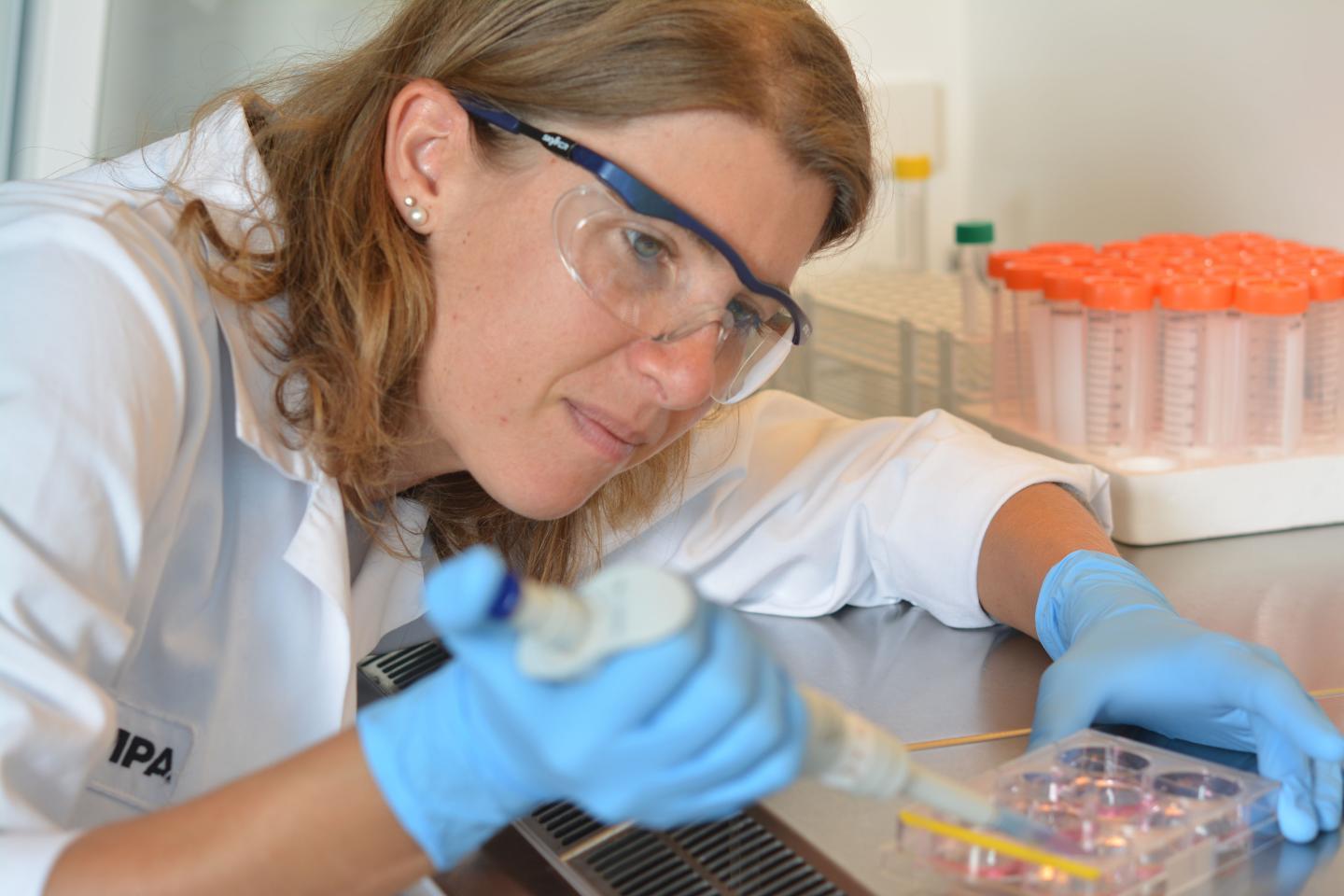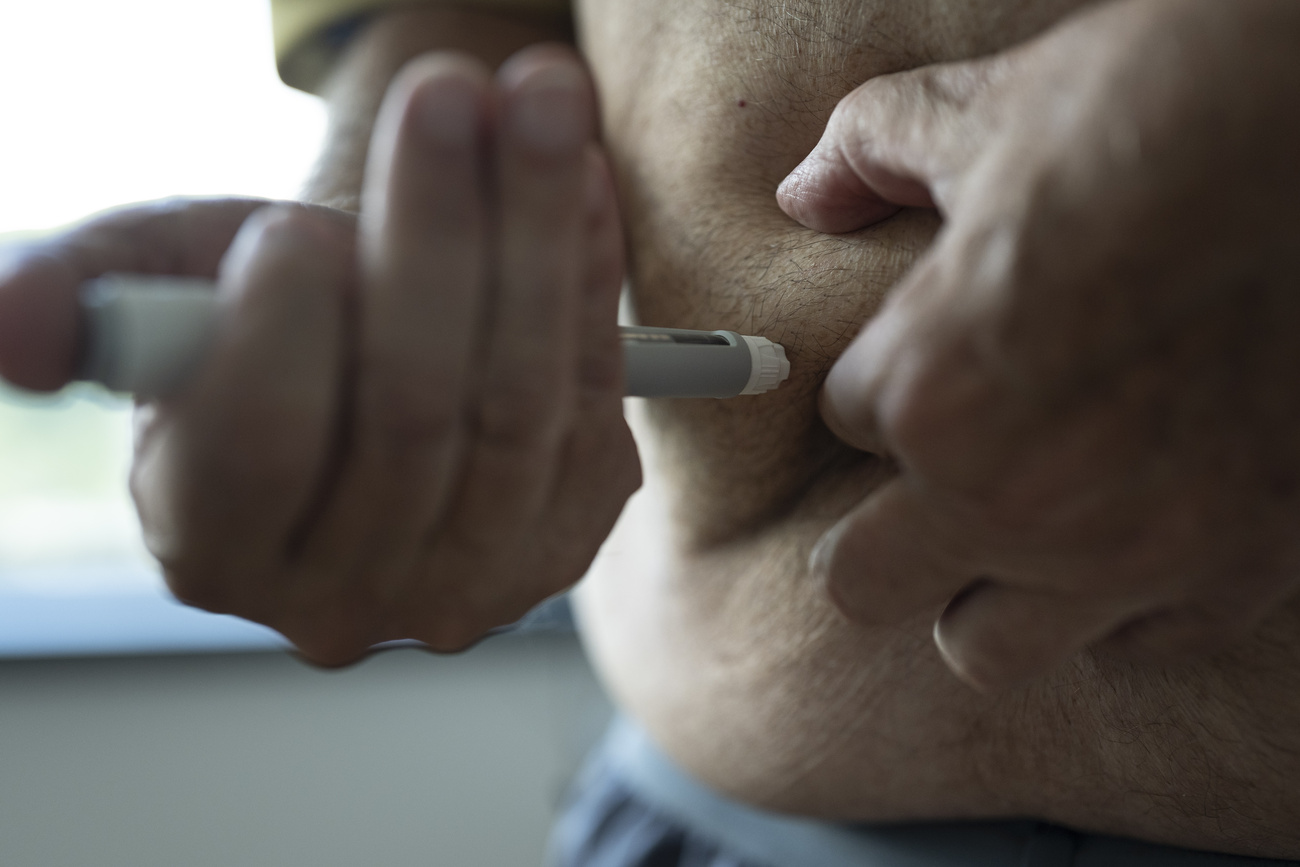
Cancer in the crosshairs

Switzerland has joined an unprecedented scientific collaboration between Europe and the United States to accelerate nanomedicine testing in a bid to conquer a common enemy: cancer.
Many of us take medicines’ side effects for granted as the price to pay for getting better. But some side effects, which occur when disease-fighting drugs damage healthy tissues in the cross-fire, may become a thing of the past with the development of nanomedicines.
Nanotechnology is a branch of science that deals with particles less than 100 nanometres (0.00001-centimetres) in size. Applying nanotechnology to medicine makes sense, since the molecular building blocks of the human body, as well as of many viruses and other disease-causing agents, are measured at the nanoscale.
Researchers can design and build nanoscale particles to deliver medicine to specific cells, allowing greater precision than is possible with traditional drugs. More targeted therapies also require less medicine, so nanoparticles could provide more sustainable treatment options.
Doxil is one drug already commonly used to treat breast and ovarian cancer, which targets tumour cells directly with nanoparticles. Doxil works by smuggling chemotherapy drugs inside cancer cells using nanoparticles called liposomes – little fluid-filled sacs made of the same molecules found naturally in human cell membranes. Markers on the liposomes’ surface allow them to sneak close enough to release their toxic contents directly into the tumour cells.
The new European Nanomedicine Characterisation Laboratory (EU-NCL), which kicked off four years of work in May, is a consortium of nine institutions funded with €5 million (CHF 5.3 million) by the European Commission. Their goal: to deliver nanomedicines to patients faster by accelerating the development and testing of nanoparticles.
“Unprecedented cooperation”
Patrick Boisseau is the principal investigator of the EU-NCL, as well as the president of the European Technology Platform for Nanomedicine, and the leader of the Nanomedicine Programme at CEA Leti in France. Boisseau says that he and his colleagues are interested in “candidate nanomedicines” – nano-formulations with therapeutic and commercial potential.
He explains that like traditional drugs, candidate nanomedicines must follow clinical trials and regulatory pathways before they can be used on patients.
“The physical, chemical and biological characterisation of nanomedicines is a little more difficult than for aspirin, for example, because it requires more sophisticated analytical [procedures],” Boisseau told swissinfo.ch.
About 20 nanomedicines have been approved in Europe, while 40 are approved in the United States. The reason the US has so many more is that before the EU-NCL was formed, there was only one infrastructure in the world that could carry out all analyses required to test a candidate nanomedicine for safety and efficacy: the United States National Cancer Institute’s Nanomedicine Characterisation Lab (US-NCL) in Frederick, Maryland.
“Until now, nanoparticle developers in Europe had to go knocking on doors to get some [analyses] here, and some there. The EU-NCL is like the mirror site of the US-NCL, but located in Europe and serving the interests of European enterprises in nanomedicine.”
For the last ten years, the United States has been pioneering the characterisation of nanomedicines, providing each with what Boisseau calls an “ID card” describing its physical, chemical and biological properties.
“This is really an unprecedented scientific and technical cooperation between the US and Europe,” says Boisseau. “If the US and Europe join forces to foster the development of new nanomedicines to cure cancer, infectious diseases, cardiovascular diseases and so on, then globally we will save time, and we will save lives.”
Swiss quality (management)
Having cleared the significant administrative hurdles involved in applying European funds to an American infrastructure, the next step is to transfer methods from the US-NCL to the EU-NCL partners so that that companies from around the world can rely on the same quality of service when it comes to testing candidate nanomedicines. All preparations should be complete by June 2016, when the EU-NCL will invite external companies to apply to have their candidates analysed.
The Swiss Federal Laboratories for Materials Science and Technology (EMPA) in St. Gallen is charged with harmonising all the analytical practices among the European partners – no small task.
“The US-NCL is a single organisation located on a single site, while the EU-NCL is a consortium of different organisations located all over Europe,” Boisseau explains. “While we have a much wider expertise to share, being located in different places makes quality management much more challenging.”
Peter Wick, who leads EMPA’s Particles-Biology Interaction Lab, says that in addition to lending EMPA’s expertise, Switzerland can also benefit directly from the EU-NCL’s services.
“For small and medium enterprises in the [pharmaceutical] field, there is a lot of uncertainty about how to proceed – about what parameters are important from a regulatory point of view,” says Wick.
“For Switzerland, that means we will have further harmonisation in these regulatory processes: if Swiss companies want particular measurements according to international standards, then they will have access to that knowhow.”
Tiny particles, big questions
Although research is also being done on cardiovascular diseases, diabetes, infectious diseases, and neurodegenerative diseases like Alzheimer’s, the major application of nanomedicine today is cancer treatment.
“Side effects, in chemotherapy for instance, are due to what we call offsite targeting. It means that once [the drugs] reach the cancer cells, they kill the cells. But if they reach healthy cells nearby, they generate side effects,” says Boisseau.
Despite these advances, nanotechnology is still a young field of research. Much is still unknown about how different kinds of nanoparticles behave in biological systems; for example, while a nanoparticle that infiltrates a tumour cell can help fight cancer, a stray nanoparticle in lung tissue could pose a health risk.
“Nanoformulations have been used in many cases to reduce side effects, to improve targeting, and to deliver the right dose to the right cells,” says Boisseau.
“They are not 100% effective. But as long as they are better than state-of-the-art drugs, and as long as they improve the quality-of-life of patients, they can be approved.”
What is Nanotechnology?
Nanotechnology is an area of science dealing with particles at the nanometre-level. A nanometre (nm) is one-billionth of a metre. For reference, the diameter of a strand of DNA is about two nm across. Although physicist Richard Feynman is credited with first presenting the theory behind nanotechnology in 1959, practical applications did not take off until more advanced technologies were developed – for example, the scanning tunnelling microscope in 1981, which allowed scientists to see individual atoms. Today, nanomaterials are the subject of intensive research for their potential in environmental remediation, energy and medicine and more. Nanomaterials are already used in products including sunscreen, sports equipment, clothing, cleaners, and electronics.
The European Nanomedicine Characterisation Laboratory
In addition to the US-NCL in the United States, the EU-NCL has partners in Ireland, France, Switzerland, the UK, Norway, Germany, and Italy. Each NCL partner will offer services for testing candidate nanomaterials, which will be submitted by companies and selected via an application process. To avoid duplication of effort between the US and EU infrastructures, EMPA senior scientist Matthias Rösslein will travel to the US for two weeks of training at the National Cancer Institute in December 2015. Rösslein, along with principal scientists from each of the EU-NCL partners, will bring the analytical methods they learn back to their institutions in Europe, to help streamline the tests used to evaluate nanomedicines.

In compliance with the JTI standards
More: SWI swissinfo.ch certified by the Journalism Trust Initiative





























You can find an overview of ongoing debates with our journalists here . Please join us!
If you want to start a conversation about a topic raised in this article or want to report factual errors, email us at english@swissinfo.ch.